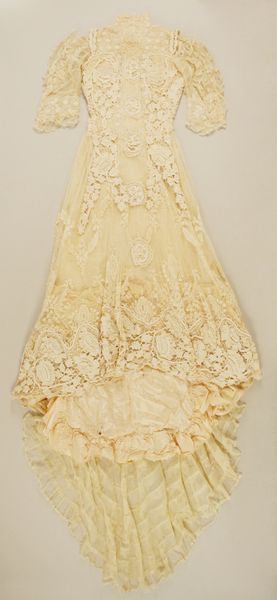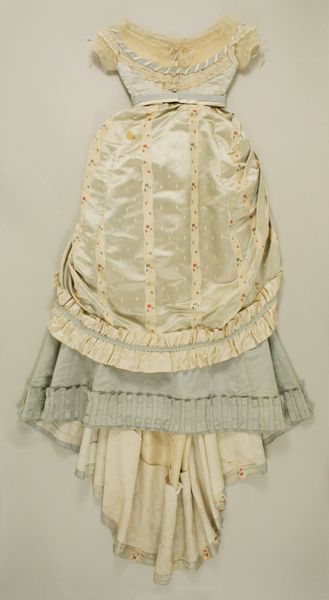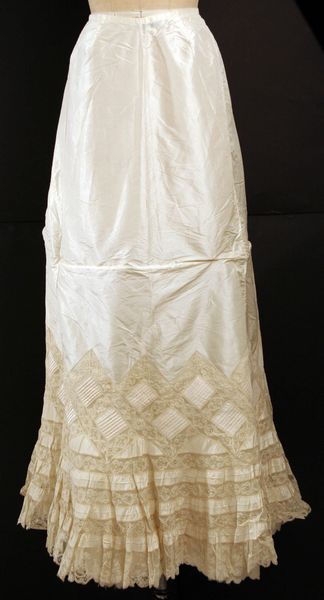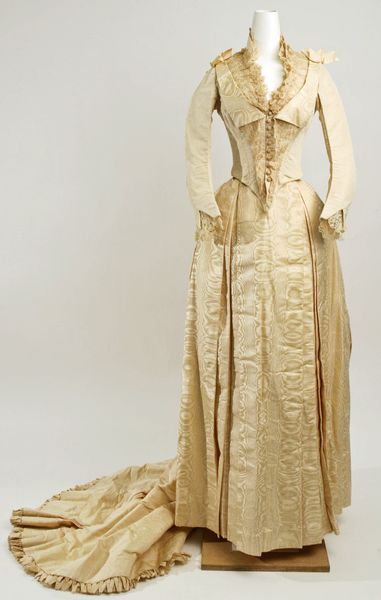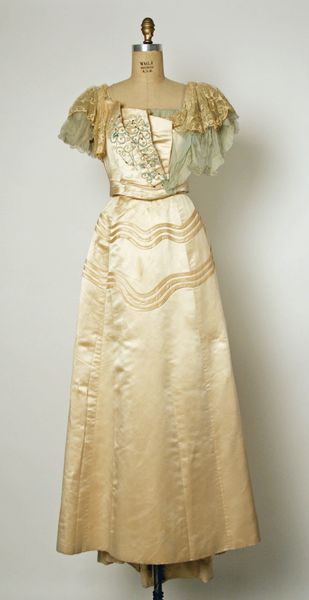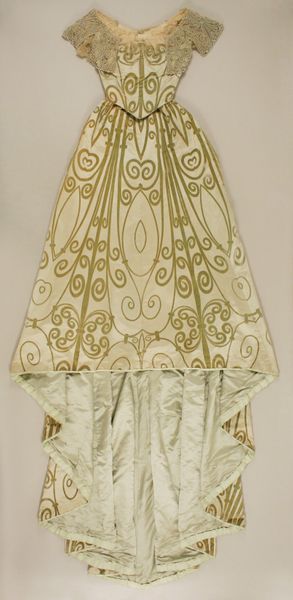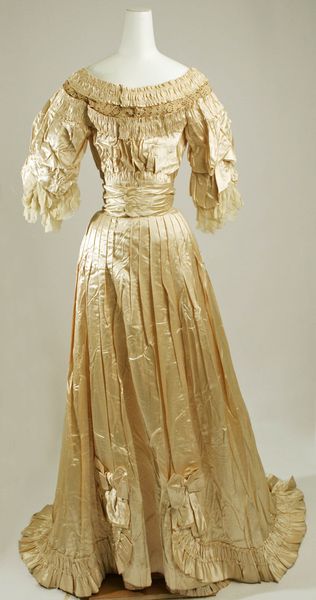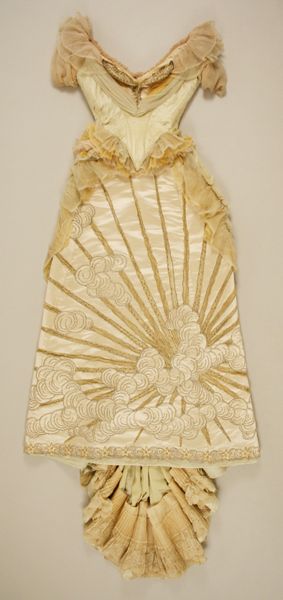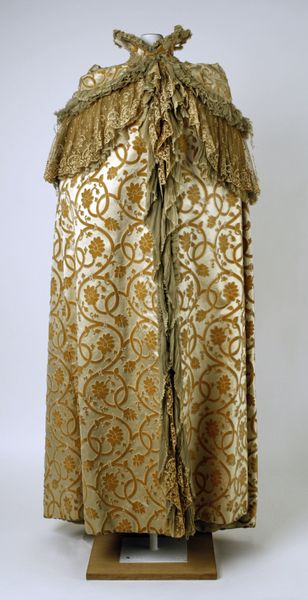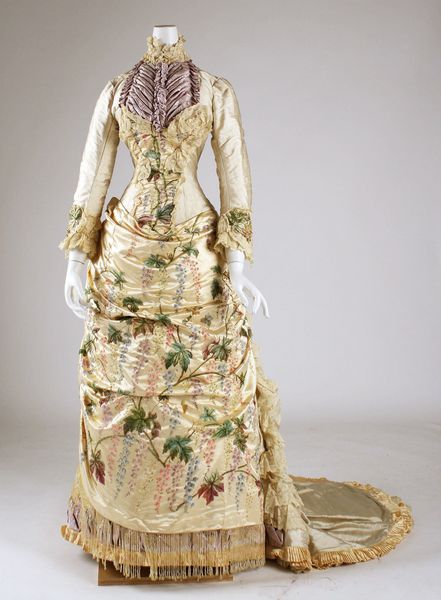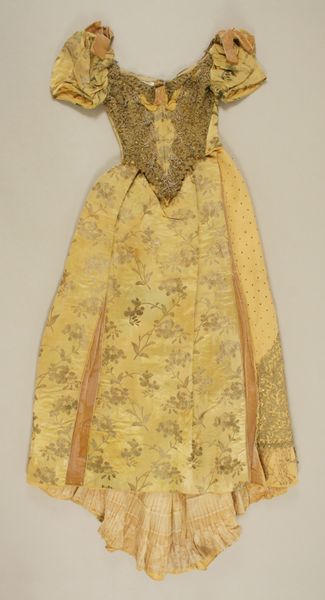
Copyright: Public Domain
Editor: This is a ball gown from 1885, made by the House of Worth. It's striking how much of the dress relies on textile work and tailoring for its effect. It feels so... constructed. What can you tell me about the historical context of a piece like this? Curator: Well, this gown tells us a lot about the socio-economic landscape of the late 19th century. The House of Worth was the go-to designer for European royalty and the upper classes, dictating trends and essentially establishing haute couture as we know it. This gown would have been a potent symbol of status and wealth. What do you notice about the silhouette? Editor: It looks like the focus is on the bust and hips. Curator: Exactly. The shape would have been achieved through corsetry and multiple layers of underpinnings. Think about the implications of that. Who was meant to wear such a restrictive garment? And who wasn't? This wasn't clothing for physical labor; it was a display of leisure and privilege. Do you see any symbolism in the decorative details? Editor: There's a repeated floral pattern... Roses, I think? Could that tie into romanticism? Curator: Possibly. The choice of floral motifs and the pale colors evoke a certain ideal of femininity: delicate, ornamental, and closely linked to notions of beauty that were privileged at the time. How do you think the mass production and consumption compare to today's environment? Editor: This gown represents an elite fashion system that existed well before today’s globalized one, though the roots of power and wealth in dress persist. It makes me realize how even seemingly beautiful objects carry so much cultural weight. Curator: Precisely. By examining garments like this, we start to understand how fashion actively participates in shaping societal hierarchies and values.
Comments
No comments
Be the first to comment and join the conversation on the ultimate creative platform.
